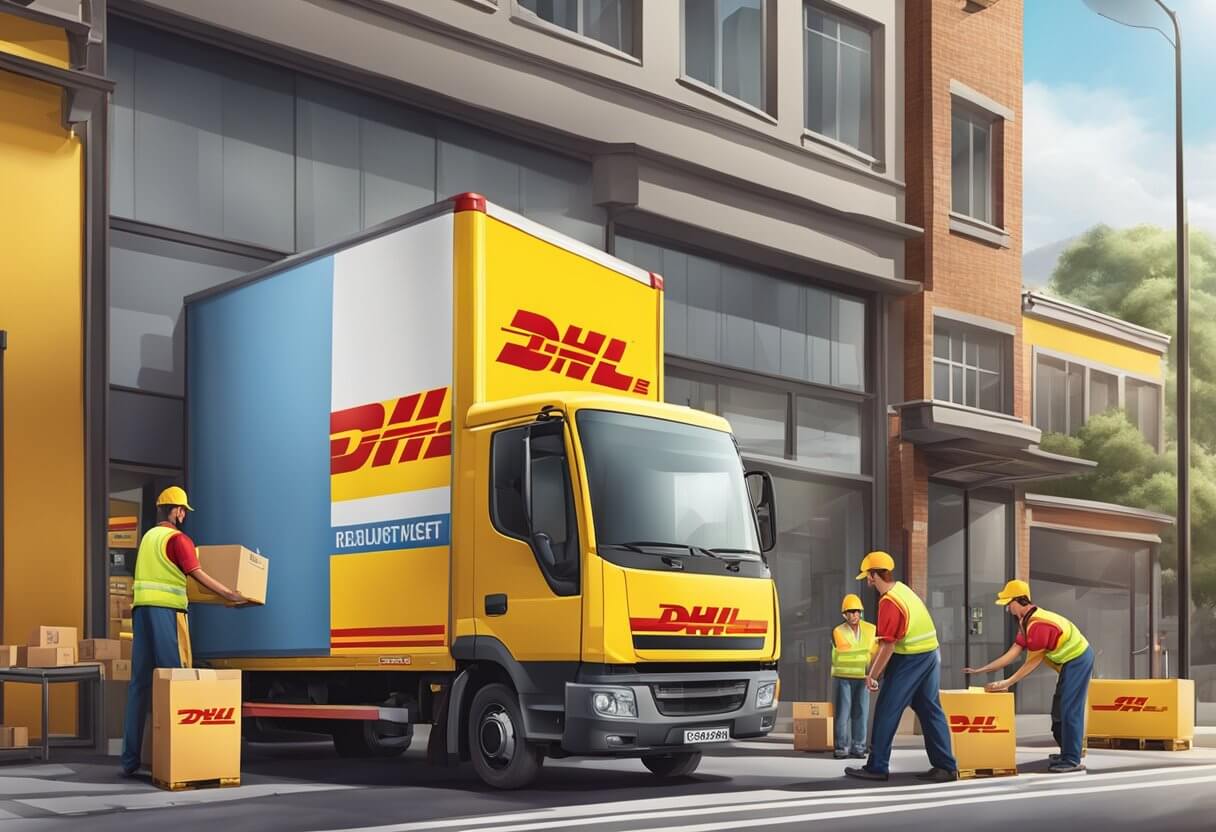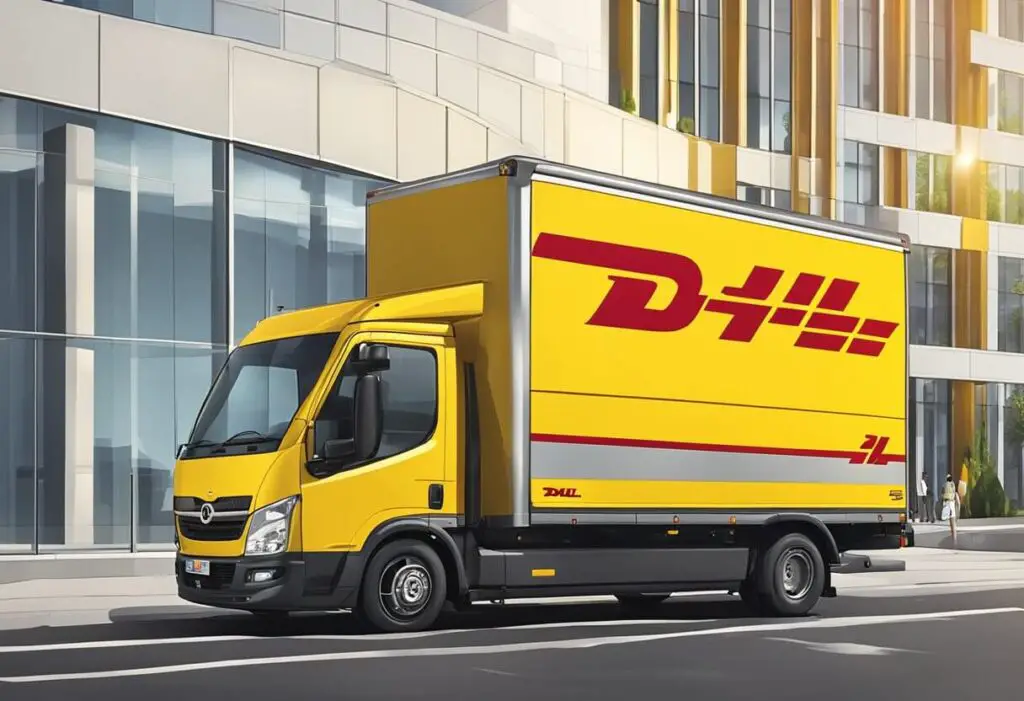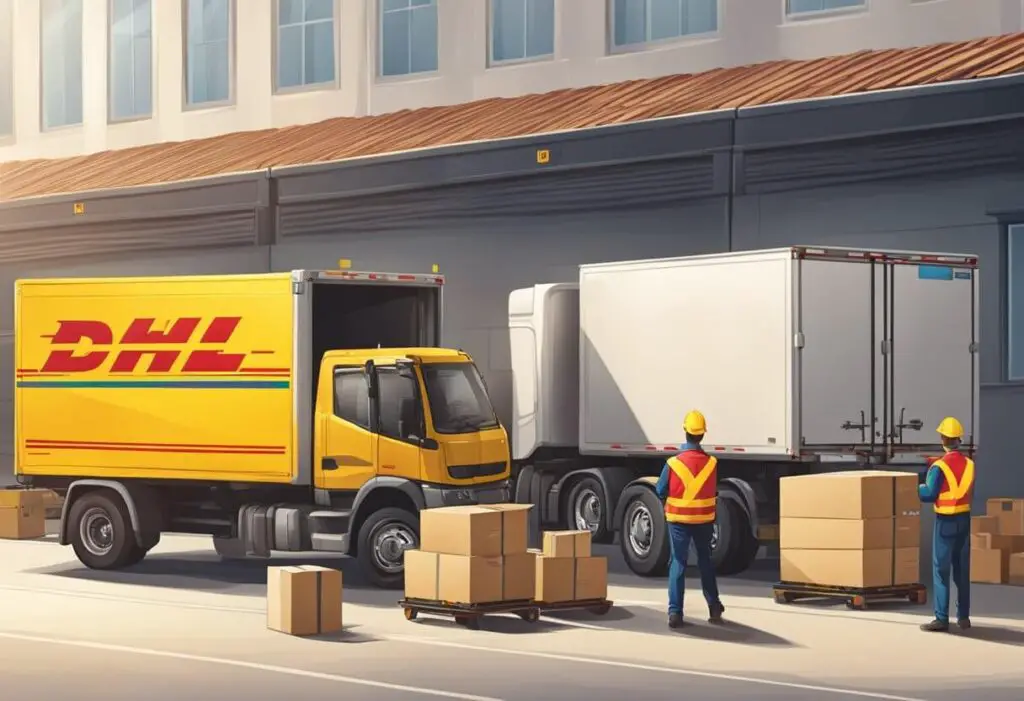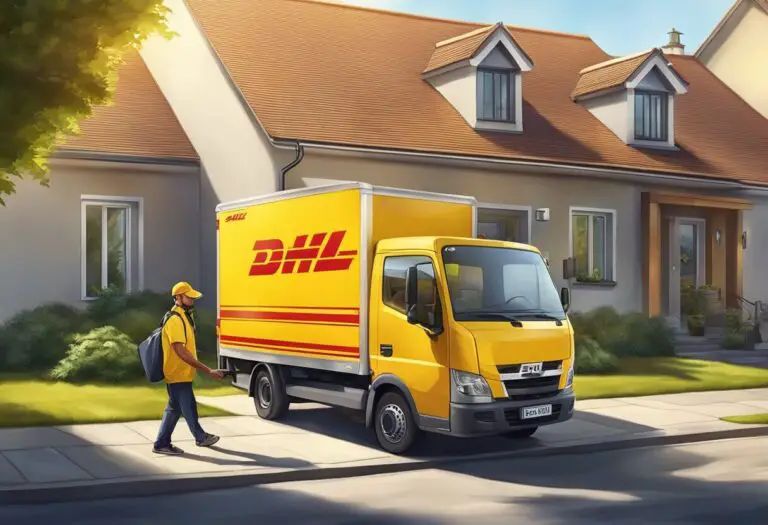What is Roadget Business DHL? Unraveling Notorious Scams

Have you received an email recently about an unexpected dhl delivery coming your way? Or perhaps a text out of the blue asking you to pay a small shipping fee to get your parcel released from customs? While it may sound innocent enough, you might want to hold off clicking that link right away.
Scams pretending to be the renowned logistics company DHL are more common than ever, tricking countless customers into handing over money or personal information. But what exactly lies behind this infamous fraud, and what is the deal with the mysterious “Roadget Business DHL” name being used?
In this post, we’ll uncover everything you need to know about Roadget and DHL, while delving into the notorious scams exploiting their brand and how to steer clear of them.
What Services Do Roadget and DHL Offer?
To understand the shady schemes abusing their reputation, we first need to recognize what Roadget and DHL’s core business is all about.
DHL stands as an undisputed titan in worldwide logistics solutions, providing an exhaustive range of shipping services spanning across over 220 countries and territories. From expedited parcel delivery and heavyweight freight transportation to intricate supply chain management and e-commerce fulfillment, DHL caters to the diverse needs of companies big and small.
Roadget operates in a similar space, supplying logistics and transportation offerings akin to DHL as a subsidiary of Roadget Business Pte. Their global reach and variety of solutions position them well to assist organizations in streamlining complex shipping workflows.
With such expansive infrastructure and expertise in moving goods worldwide, it’s no wonder why fraudsters choose to mimic these logistics leaders when deploying sneaky scams.
Why Do Scammers Use the DHL Brand for Schemes?

The prominence of DHL makes it an obvious choice for scammers to impersonate when spreading malicious schemes or extracting money and data illegitimately.
With so many customers routinely interfacing with DHL for deliveries, it becomes much easier to trick them by pretending a message is related to a shipment they may have ordered. Even innocent notifications can appear credible at first glance when cloaked behind a brand almost universally recognized for enabling global freight and small parcel shipping.
Beyond credibility, DHL’s reputation for facilitating international orders also offers scammers an easy backstory for demanding additional payments. Under the guise of enabling cross-border delivery, fraudsters can request funds from targets to allegedly clear customs inspections or processing fee. And those worrying about a long-awaited package from overseas may be more inclined to comply.
By posing as such a ubiquitous courier service interfacing with millions globally, scams pretending to be DHL lend themselves well to large-scale automation and distribution campaigns as well. A pool of potential victims quickly multiplies when sending out spam emails en masse forward to inboxes on file from past data breaches. The broad applicability makes for efficient phishing attempts needing minimal customization.
This potent blend of trust, concern, and volume makes DHL an ideal front for all sorts of digital extortion ploys aimed at manipulating innocent users and swindling them out of cash or personal data. But what specific tricks should customers be wary of?
Common DHL Scam Tactics to Recognize
While the exact techniques may evolve over time, most scams with a DHL angle incorporate similar methods and psychological tactics. Being able to recognize these common tricks is key to quickly identifying and reacting appropriately to fraudulent schemes in the wild. Let’s break down the typical workflow victims may experience:
Step 1: Initiate Contact
The first component leverages communication channels like email or text messages to establish contact with potential targets. These will be unsolicited, meaning you likely didn’t proactively sign up to receive shipping status notifications from DHL directly beforehand.
The messages will also be broad and generic, addressed to customers, members, or just containing your first name rather than a specific identity. This allows spam campaigns to blast out at scale without customizing individual personal details upfront.
Step 2: Instill Urgency
Next, content within emails or texts aims to instill a sense of urgency, pushing recipients to act quickly through ominous warnings or exciting offers with short timelines.
Examples include notifications that a pending package will be cancelled or returned if not claimed in 48 hours, limited-time shipping vouchers set to expire, and more. This pressures users to click links and input information without deeper inspection.
Step 3: Redirect to Phishing Pages
Once a user clicks on embedded links within initial scam messages, the next phase involves redirecting victims to outside phishing pages mimicking legitimate websites.
At first glance, these scam portals mirror the visual design of companies like DHL while subtly incorporating slight URL modifications and variations of logos. This fools users into entering credentials, bank details, or personal data thinking they’re on an authentic domain.
Step 4: Steal User Data
With users tricked into landing on fraudulent yet convincing pages, the scam reaches its final stage where victims unknowingly turnover sensitive information directly to criminals rather than legitimate companies.
Whether handing over login credentials, bank account specifics, or personal identities, the data ends up in the hands of scammers rather than valid customer service or financial channels. This allows them to illegally access accounts, make fraudulent purchases, steal funds, and assume user identities for further criminal activities.
Keeping this sequence in mind makes identifying social engineering schemes using brands like DHL much more apparent, even when scam artists get creative with timely offers and emergencies.
Examples of DHL Phishing Emails and Texts

While the scam structure remains largely similar over time, fraudsters continue putting out new variants tailored to recent events, holidays, and consumer trends.
Let’s analyze two examples reflecting the most common types of delivery and shipping-related social engineering schemes to be watchful for in your inbox:
Unexpected Parcel Notification
One variation leverages the major rise in e-commerce orders over the past few years, with the COVID-19 pandemic accelerating online purchase volumes even further.
Scammers will send emails or texts acting as DHL with information about a surprise package or incoming shipment from a retailer you may have ordered from before:
Dear John,
We have an unexpected parcel addressed to you scheduled for delivery today from an Amazon Marketplace seller. However, we require an updated destination address before releasing to our drivers.
Please click here to fill out a quick form confirming your street address, email, and phone number to claim this awaiting package.
Thanks, The DHL Support Team
This plays off recipients likely having ordered items online recently, with Amazon purchases being extremely common. Even vague references to unnamed retailers lend added credibility for victims expecting shipments from the mail.
While addresses and contact information may seem harmless upfront, it gives scammers data points to steal identities or sell on to other bad actors.
Customs Clearance Payment Request
Cross-border purchases from international retailers introduce additional shipping complexities – the perfect cover for crafting yet another sneaky ruse.
Scammers impersonate DHL requesting payment to clear a stuck shipment held up in customs:
Dear Customer,
We have a shipment addressed to you that requires a customs clearing fee of $47.23 before entering the country and releasing to the final local delivery carrier.
As the importer of record, this charge is your responsibility to cover internation inspection costs. Please submit payment within 24 hours through the link below to avoid return/cancellation:
[Link to fake payment portal]
You can also call our support line at 555-555-1234 if you have any other questions.
Regards,
DHL Customs Processing
Despite often small dollar amounts that don’t raise red flags upfront, victims end up enabling credit card fraud or exposing bank account information that gets exploited in larger future charges.
This is just a sampling of the countless variants fraud rings test and distribute en masse to harvest information, bank, credentials, and money at scale.
How to Identify and Report Fake DHL Emails?
While sneakier than ever before, a trained eye can spot a variety of indicators signaling scam DHL communications rather than legitimate ones:
- Incorrect Email Address: Authentic messages come from an @dhl.com domain name. Messages through other providers like Gmail or domains with typos are dead giveaways.
- Spelling Mistakes: Sloppy grammar, misspellings, and awkward phrasing suggest foreign scammers rather than professional DHL templates.
- Requests for Fees: DHL builds delivery costs into shipping labels and doesn’t directly charge additional fees later upon parcel arrival.
- Links to Other Domains: Hover over embedded links to see where they really direct rather than the labeled friendly URL text. Unrelated domains signify fraudulent pages.
- Sense of Urgency: Stressful timing demands pressure victims to act rashly rather than inspecting carefully before clicking links or attachments.
- Unsolicited Contacts: DHL wouldn’t message customers out of the blue unless they specifically signed up for tracking notifications on an existing shipment.
If something seems suspicious, always visit dhl.com directly yourself and sign in to check latest tracking information rather than clicking any provided links.
To curb ongoing phishing efforts and contact misuse, you can also file complaints and share scam examples with DHL by forwarding suspicious emails to [email protected]. This allows their security team to trace activity back to fraud sources and shut them down.
Reporting scams is crucial to protect yourself while limiting criminal operations exploiting trusted brand recognition.
Remember These Tips to Avoid DHL Scam Risks
While staying vigilant against sneaky social engineering tricks is important, preventing the initial missteps comes down to remembering several fundamental tips as well:
- Avoid Clicking Links – Regardless of content or sender, resist the reflex to visit embedded URLs in unsolicited messages right away. Verify status directly via official channels instead.
- Check Domains Before Entering Info – Before submitting data anywhere, including login portals, double check domains match legitimate sites like dhl.com.
- Use Unique Passwords – If you incorrectly entered credentials into a scam phishing form, change passwords immediately to protect accounts.
- Never Pay Unexpected Fees – Delete requests for surprise payments to release shipments or clear customs without confirming legitimacy directly via phone first.
- Report Scam Attempts – Whether falling victim or noticing red flags, report all sketchy contact attempts to companies impersonated so they can address misuse of their brand.
Keeping these tips top of mind makes it much simpler to sidestep the majority of social engineering scams abusing the credibility of shipping providers like DHL for their schemes.
The Scale of Roadget vs DHL: Global Giants
Stepping back after dissecting this fraud, you may still be wondering about the initial Roadget Business DHL name frequently referenced across scam communications and sites. Are they even a real company?
As touched on initially, Roadget stands as an established industry player focusing heavily on worldwide logistics. However, they still pale in size when compared to the unmatched scale of DHL globally. This powerhouse handles over 1.8 billion shipments annually, earning over $ 94.4 billion in revenue with operations across 220+ countries worldwide backed by 586,404 employees.
Comparatively, Roadget manages a respectable transportation network spanning 80+ countries but brings in under $1 billion in sales. The sheer dominance of DHL in market share for international shipping makes them an obvious impersonation choice for scammers wanting cut through the noise to victimize the maximum number of customers.
While Roadget retains relevance as a global transportation solutions firm, DHL sits firmly entrenched as the apex leader in facilitating cross-border logistics across all regions and industry verticals internationally. Their brand awareness eclipses almost all competitors in the consumer conscience when it comes to delivering packages reliably through air, ocean and ground freight.
This potent mixture of an ubiquitous household name yet complex behind-the-scenes shipping workflows makes DHL a prime target for exploitation by fraud rings capitalizing on public familiarity yet ignorance of technical logistical complexities. Both factors allow scams to thrive at an endemic rate as all signs point to schemes only escalating moving forward.
The Bottom Line
In closing, DHL scams continue running rampant globally due to the trusted household brand cachet combined with convoluted cross-border logistics workflows allowing fraud to hide in plain sight. Hacking the human vulnerabilities behind brand affinity and shipping-related fears enables deceit at scale.
While the bad actors grow increasingly sophisticated, savvy consumers can outsmart schemes through vigilance, prevention, and reporting suspicious activities when encountered. Spreading public awareness and applying pressure on offenders hinders the profitability of phantom operations misusing esteemed leaders like DHL for personal gain at consumer expense.
With everyone doing their part to identify and combat fraud, the rewards heavily outweigh the time invested to learn proper scam detection while automating protections. Don’t allow criminal networks to continue hijacking brands renowned for enabling seamless global commerce. Together we can make life far less lucrative for them while ushering in shipping experiences efficient, personalized and secure for all.






